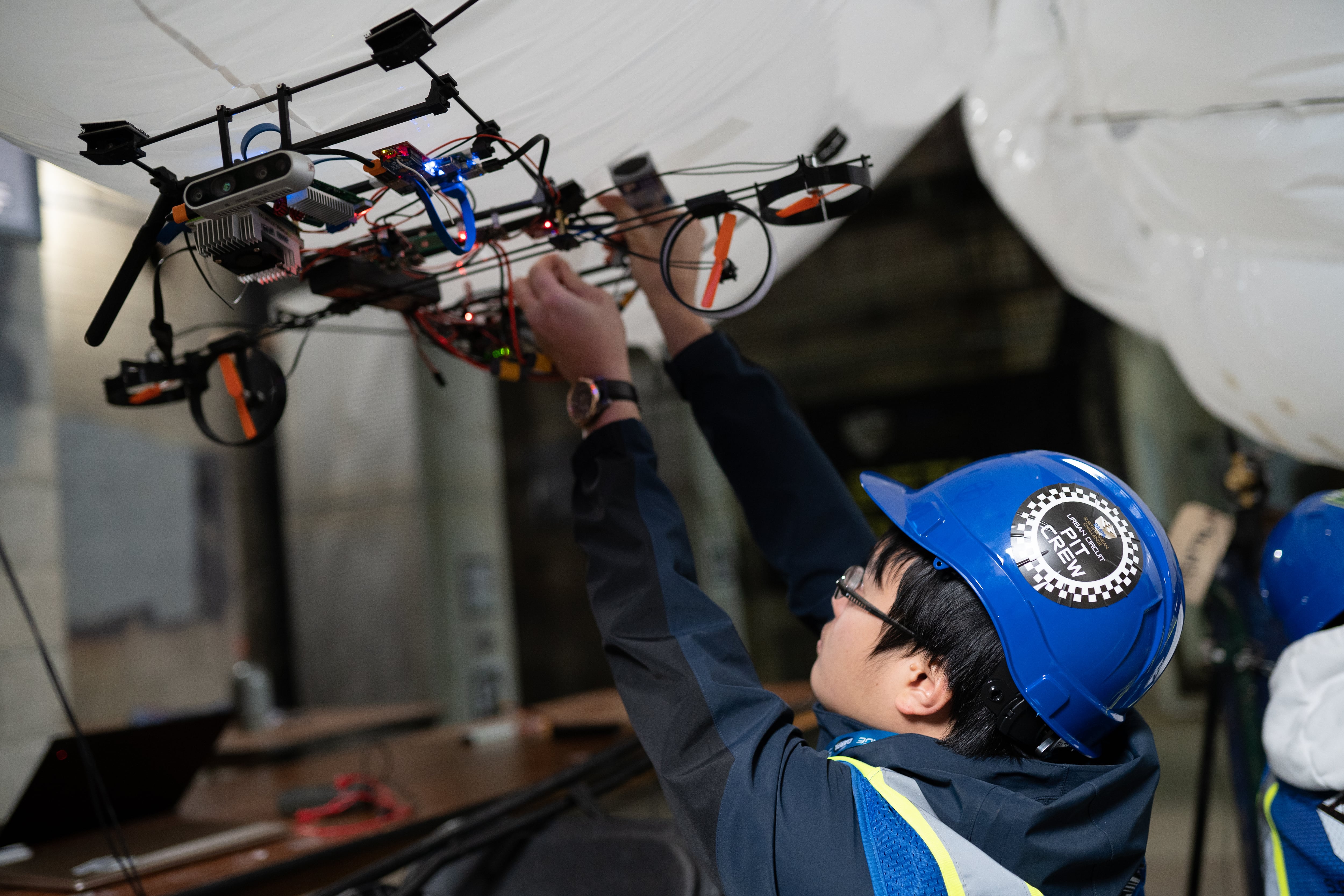Elma, Washington, with an estimated population of 3,092, is hardly the foremost example of an urban battlefield, but it does offer a nearby business park, settled into the bones of a never-used nuclear power plant.
For military planners who fear future conflicts in megacities, Elma provides a near-ideal testing ground: an urban environment without the difficulties of an inhabited space.
This week, the Satsop business park outside the city was host to the next chapter of the Subterranean Challenge by the Defense Advanced Research Projects Agency. The explicit goal of the event was to “develop innovative technologies that would augment operations underground.” In practice that means testing robots, often teams of robots, and the software to navigate unknown environments. Mapping is a necessary but insufficient part of the process. For the challenges, the robots must locate specific artifacts, and then record their position within 5 meters.
The event, which C4ISRNET attended, offers prize money, but also a way to help ensure the military will one day have the technology it needs.
“There are a lot of different types of what it means to be urban underground,” said Timothy Chung, DARPA program manager for the Subterranean Challenge. “We came to Satsop because it was a perfect blend of challenging environment, and one that supports scale of event and makes use of local resources.”
A Titan vehicle from team CSIRO, with a DJI Matrice 210 quadcopter mounted on its back, rolled into the cold, damp, dark void of the beta course at the urban circuit of the challenge. As it moved forward and returned information, rendered maps, once blank, filled in.
“We want actionable situational awareness,” Chung said. “What is the nugget of information that the commander would make use of?”

Consider the robots exploring the underground passages at Satsop. A power plant is exactly the kind of complex space built for human passage — one where, in the event of a disaster, it would be safer to send a robot in first.
Some of the artifacts the robots needed to find were common across all three of the Subterranean Challenges’ environments (which include a tunnel, held in August 2019; an urban setting, held in February; and a cave, to be held in August 2020). These artifacts included red backpacks; cellphones, sometimes playing video; and thermal manikins that gave off the heat signature of a human and had speakers playing “welcome to the Subterranean Challenge.”
In addition, the urban circuit featured heated vents blowing air, and canisters releasing carbon dioxide, as a stand-in for more dangerous gasses. The mix of artifacts required a range of technologies to detect what was happening, with everything from visual confirmation to gas sniffers to Wi-Fi readers. Teams used these tools as a way to approximate the best way for robots to provide useful information that first responders would need if they followed robots into a dangerous space.
Satsop featured two courses on the urban circuit with each run of the course is limited to one hour. To prevent teams from simply guessing that every possible inch of mapped space is one of the 20 artifacts on the course, teams are limited to a total of 40 guesses per run. Between runs, teams were welcome to make modifications, adapt existing machines to discover constraints and save map information, with the understanding that parts of the course may change between runs.
One such field modification was the conversion of an uncrewed blimp into a more dirigible-bodied craft. Team NCTU (from Taiwan National Chiao Tung University) created a pair of blimps called “Duckiefloats,” designed to float up and explore the vertical spaces inside the courses at Satsop. A novel creation, the bodies proved too wide on initial runs, so the engineers removed the protective cage from the undercarriage holding the electronics and taped on a simple lattice of carbon-fiber rods to give the airships a narrower, more door-shaped profile, shrinking the width to about 90cm.

Another innovation, in varying forms, was using robots to release smaller fixed communication relay nodes. With antennas and power supplies, the various relays allowed a robot to send its signal further back through the signal-hostile environment. Points were not awarded if the robot cannot relay its findings to the human supervisor, so signal integrity is an important part of the process.
The dropped relays are so novel, and so widespread, that the virtual track of the Subterranean Challenge is working on incorporating them in its model for the upcoming cave circuit. In the virtual competition, teams select robots and sensor packages from a predefined budget of points. With robots selected, the virtual teams then code autonomous navigation to the robots and run the robots through practice courses until they feel the algorithms are ready. Once submitted, the code is run through the virtual challenge courses without further modification.
The urban circuit of the Subterranean Challenge is ongoing, with winners of the physical and virtual components to be announced Feb. 27. Self-funded teams are eligible for cash prizes, with $1.35 million in prizes to be awarded across both the physical and virtual tracks.
Seventeen minutes into its run on Beta Course, CSIRO’s quadcopter lifted off the back of the Titan. Tentatively, cautiously, it explored the room it was in. Then, finding an open shaft, it descended into the void, ready to map out actionable intelligence on the subterranean site but also a path forward for robotic assistance.
Kelsey Atherton blogs about military technology for C4ISRNET, Fifth Domain, Defense News, and Military Times. He previously wrote for Popular Science, and also created, solicited, and edited content for a group blog on political science fiction and international security.








